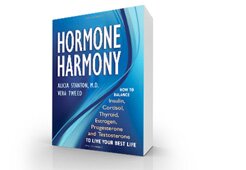Top Foods to Prevent Heart Attack
February is National Heart Month. With more than 2 million Americans suffering heart attacks and strokes each year heart health is of vital importance. As a country, our poor eating habits are taking a huge toll on our heart health.
According to the Centers for Disease Control, not one state in the U.S. had an obesity rate under 20 percent in 2010. Thirty-six states had populations with obesity rates of 25 percent or higher. Approximately one-third of U.S. adults (33.8 percent) are obese, and about 17 percent of kids aged 2-19 years are as well. In the last 30 years childhood obesity has tripled, setting children up for future health problems that can dramatically shorten their lives: diabetes, heart disease, stroke, hypertension, and certain types of cancer.
Embracing a heart-healthy diet can and should be a family affair. Focusing on eating whole, fresh foods instead of processed ones can help your family beat the battle of the bulge without feeling deprived.
Here is a list of top foods to incorporate into your diet to keep your heart healthy and to prevent a heart attack:
- Fruits and Vegetables – the high fiber content in fruits and vegetables decreases the buildup of plaque in the arteries and less plaque means decreased blockages to the heart.
- Nuts – Walnuts, almonds, hazelnuts, peanuts, pecans and pistachio nuts are rich in polyunsaturated fatty acids that can reduce blood cholesterol. All nuts are high in calories, so a handful will do.
- Oats – eaten daily, oats can clean arteries better than some medications.
- Salmon and Flaxseed – rich in omega-3 fatty acids, salmon and flaxseed lower triglycerides.
- Garlic – numerous studies have shown benefits of regular garlic consumption on blood pressure, platelet aggregation, triglyceride levels and cholesterol levels.
- Berries and cherries – these fruits are high in polyphenols, which prevent cell damage that creates unhealthy blood vessels and heart.
- Quinoa – this tiny seed is an excellent source of magnesium, the mineral that relaxes blood vessels. Low levels of magnesium lead to hypertension, heart disease and arrhythmias.

